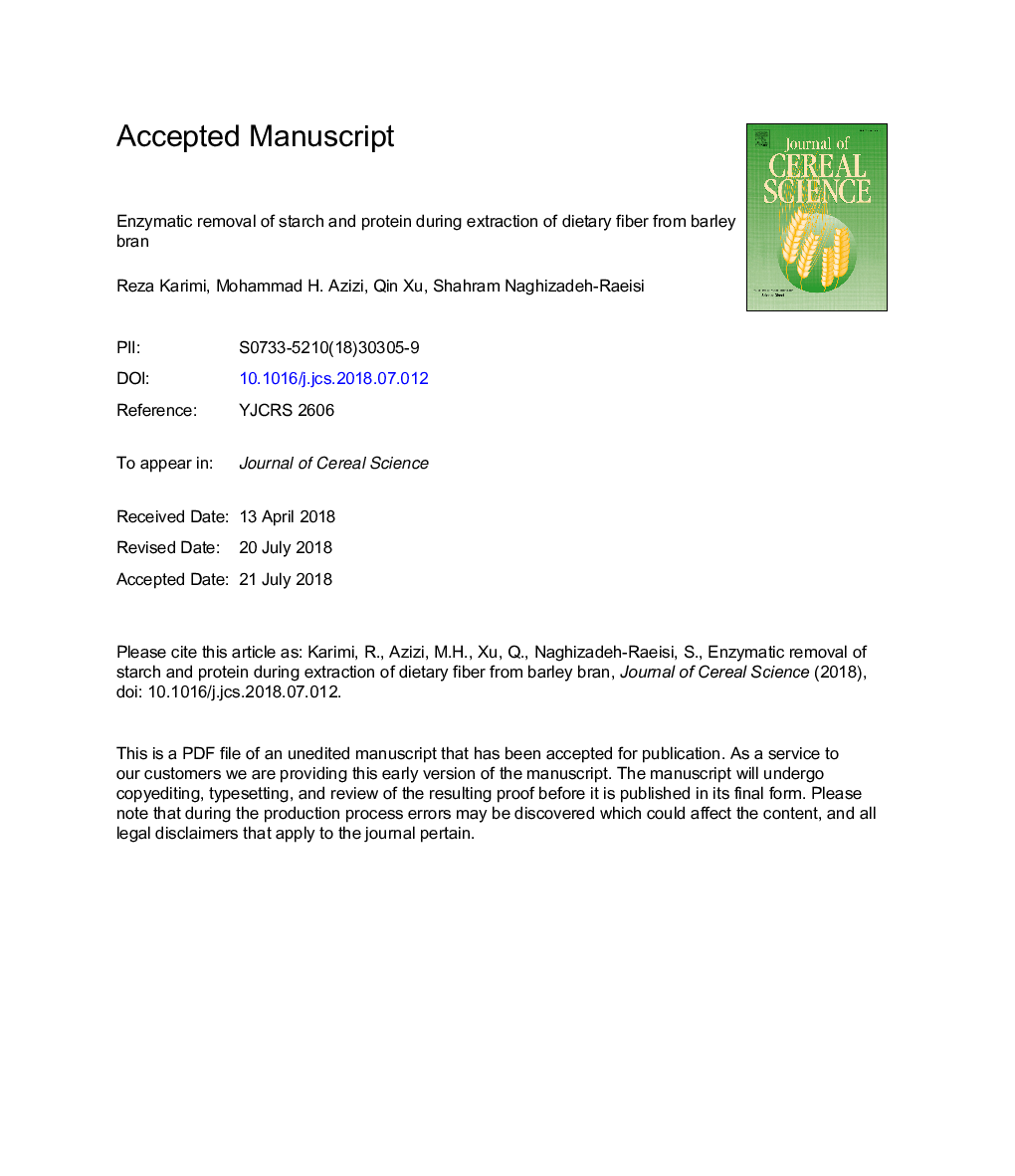| Article ID | Journal | Published Year | Pages | File Type |
|---|---|---|---|---|
| 11033233 | Journal of Cereal Science | 2018 | 37 Pages |
Abstract
The aim of this study was the application of different approaches to enzyme utilization for the extraction of barley bran dietary fiber based on released degraded compounds such as maltose and tyrosine as indicators of starch and protein removal. As barley bran composition and enzyme activities differ in various conditions, it was necessary to set up a technique to identify the range of the factors to avoid their underestimation or overestimation. Enzyme concentrations, temperatures, and reaction times were considered as three extraction factors. Their sequential changes and simultaneous use had a considerable role in hydrolyzing the substrates and saving the time of enzymatic reactions, respectively. The highest starch removal (â¼87%) was obtained using protease-amylase and amyloglucosidase treatment in the total time of 315â¯min. The lowest starch removal (â¼64%) was obtained using the simultaneous treatment of α-amylase and protease in the total time of 180â¯min. The starch removal of â¼74% was achieved by upper-medial concentration of the simultaneous treatment and amyloglucosidase in the total time of 195â¯min. The results of this study showed that choosing the level of extraction factors depends on the intended level of purity of the final product, time, and the performance of the enzymes in an economical way.
Related Topics
Life Sciences
Agricultural and Biological Sciences
Agronomy and Crop Science
Authors
Reza Karimi, Mohammad H. Azizi, Qin Xu, Mohammad A. Sahari, Z. Hamidi,
